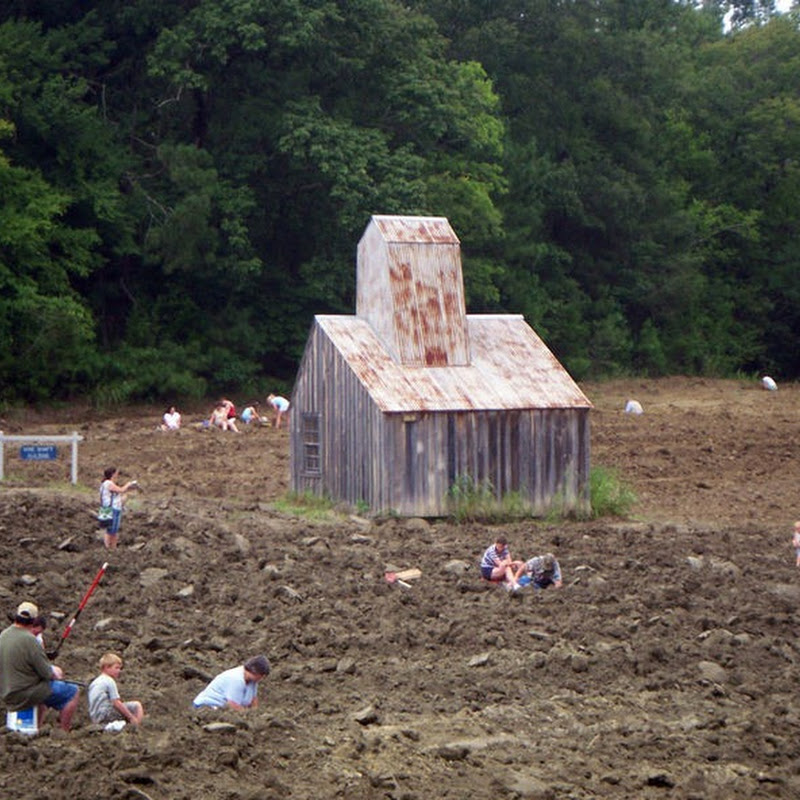The American heartland was once dotted by thousands of ceremonial and burial mounds. They occurred over a large area that stretched from the Great Lakes to the Gulf of Mexico and from the Mississippi River to the Appalachian Mountains. When Europeans first landed on America and found that even the natives had no knowledge of their origin, they thought that some lost civilization unrelated to the Native Americans were responsible for their creation, because they assumed that the natives were too uncivilized and too unsophisticated to create such lasting monuments. These mysterious architects came to be known simply as “mound builders”.

Man Mound in Baraboo, Wisconsin. Photo credit: Ethan Brodsky
Speculations about this unknown civilization gave rise to many theories about ‘lost tribes from Israel that came to America and built the mounds, and even refugees from Atlantis. It’s now largely accepted that the mound builders were none other than ancestors of present day Native American tribes, but they lived so long ago that everything about them was forgotten.
Archaeological research indicates that the mounds were built by many different societies that lived in different periods of time that stretched from 3500 BC to about 1000 CE. Some of them were hunter-gatherers; others were farmers. The earthen mounds were built for different purposes and had different shapes and sizes, that ranged from flat-topped pyramids to conical or linear structures. Some were effigy mounds built to resemble shapes of animals and human figures. The most famous effigy mound is the Serpent Mound in southern Ohio, that resembles a coiled serpent more than 400 meters long. Another mound located in Baraboo, Wisconsin, is in the form of a man and measures 65 meters long.
It is estimated that over 75% of mounds were obliterated by farmers who regarded them as mere bumps in the field and obstacles to cultivation. One early Sauk County farmer was reported to have said: “We were rather irked by the large number of Indian mounds we had to plow down. There must have been at least 25 on our land….Some were shaped like animals and some like birds, and all were from three to five feet high...I suppose we should not have destroyed them. But they were then regarded merely as obstacles to cultivation, and everybody plowed them down."
The handful of mounds that remain today are protected, and listed on the National Register of Historic Places.

Man Mound in Baraboo. www.wiscnews.com

“Bird Mound” on the south shore of Devil’s Lake, Wisconsin. Photo credit: Jared Kuschewski

Serpent Mound in southern Ohio. Photo credit: Geocaching.com

Serpent Mound in southern Ohio. Photo credit: Roy Luck/Flickr

At 19 meters, the Grave Creek Mound in the Ohio River Valley in West Virginia is one of the largest conical-type burial mounds in the United States. Photo credit: Tim Kiser/Wikimedia

Monks Mound, near Collinsville, Illinois, is the largest Pre-Columbian earthwork in the Americas and the largest pyramid north of Mesoamerica. Photo credit: John Stagner/Flickr

Monks Mound, near Collinsville, Illinois. Photo credit: Jamie Kelly/Flickr
Sources: Sauk County History / Wikipedia / Encyclopedia.com
Subscribe to our Newsletter and get articles like this delieverd straight to your inbox

Man Mound in Baraboo, Wisconsin. Photo credit: Ethan Brodsky
Speculations about this unknown civilization gave rise to many theories about ‘lost tribes from Israel that came to America and built the mounds, and even refugees from Atlantis. It’s now largely accepted that the mound builders were none other than ancestors of present day Native American tribes, but they lived so long ago that everything about them was forgotten.
Archaeological research indicates that the mounds were built by many different societies that lived in different periods of time that stretched from 3500 BC to about 1000 CE. Some of them were hunter-gatherers; others were farmers. The earthen mounds were built for different purposes and had different shapes and sizes, that ranged from flat-topped pyramids to conical or linear structures. Some were effigy mounds built to resemble shapes of animals and human figures. The most famous effigy mound is the Serpent Mound in southern Ohio, that resembles a coiled serpent more than 400 meters long. Another mound located in Baraboo, Wisconsin, is in the form of a man and measures 65 meters long.
It is estimated that over 75% of mounds were obliterated by farmers who regarded them as mere bumps in the field and obstacles to cultivation. One early Sauk County farmer was reported to have said: “We were rather irked by the large number of Indian mounds we had to plow down. There must have been at least 25 on our land….Some were shaped like animals and some like birds, and all were from three to five feet high...I suppose we should not have destroyed them. But they were then regarded merely as obstacles to cultivation, and everybody plowed them down."
The handful of mounds that remain today are protected, and listed on the National Register of Historic Places.

Man Mound in Baraboo. www.wiscnews.com

“Bird Mound” on the south shore of Devil’s Lake, Wisconsin. Photo credit: Jared Kuschewski

Serpent Mound in southern Ohio. Photo credit: Geocaching.com

Serpent Mound in southern Ohio. Photo credit: Roy Luck/Flickr

At 19 meters, the Grave Creek Mound in the Ohio River Valley in West Virginia is one of the largest conical-type burial mounds in the United States. Photo credit: Tim Kiser/Wikimedia

Monks Mound, near Collinsville, Illinois, is the largest Pre-Columbian earthwork in the Americas and the largest pyramid north of Mesoamerica. Photo credit: John Stagner/Flickr

Monks Mound, near Collinsville, Illinois. Photo credit: Jamie Kelly/Flickr
Sources: Sauk County History / Wikipedia / Encyclopedia.com
Subscribe to our Newsletter and get articles like this delieverd straight to your inbox
The Mounds of North America
4/
5
Oleh
Chandu Numerology












